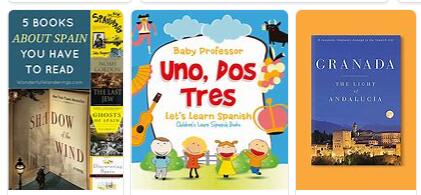In the Catalan-speaking lands, in this first half of the century, the survival of the Provençal troubadour lyric tradition acted as an obstacle to the Italianizing renewal, whose delay in poetry is clearly evident in relation to prose. In any case, a few names can be adduced: those of Metge and Febrer. The distance between these writers and the Castilian situation is evident with Bernat Metge himself (mid-14th century), who, more than a poet, is to be considered the creator of Catalan humanistic prose. 1381, the year of publication of one of his narrative poems, the Libre de Fortuna e Prudéncia, would be the oldest date in the history of Hispanic Dante if the only Dante reference that has been adduced were confirmed as true: “lo mayor dol”, transplant of the famous sentence of Francesca; but the source may be Boethius directly. More probable is the memory of the work of D. in Lo Somni (1398), based on the Somnium Scipionis, in which Italian sources also converge. The connections detected – description of Hell, the figure of Charon, the presentation of Minos and the allusion to Limbo – can be explained very well without taking into account the Comedy; the Metge, although at the center of the Catalan humanistic Italianism of the end of the fourteenth century, never mentions the name of Dante. allusion to Limbo – they can be explained very well without taking into account the Comedy; the Metge, although at the center of the Catalan humanistic Italianism of the end of the fourteenth century, never mentions the name of Dante. allusion to Limbo – they can be explained very well without taking into account the Comedy; the Metge, although at the center of the Catalan humanistic Italianism of the end of the fourteenth century, never mentions the name of Dante.
Really important in the history of Hispanic Dante is Andreu Febrer (1377? -1440?), Because he deserves the credit for the first version of the Comedy in triplets. While the Castilian translation was in prose and the triplet is not introduced in Spanish poetry until the 10th century. XVI, Catalonia boasts a metric version since 1429, thus endowed with an artistic dimension that does not reduce it, like the Castilian one, to cultural interest. However, the Febrer translation also remained unpublished for centuries and was first published only in 1878.
In the context of poetic creation, a few verses of a Sirventesch of 1398, on the fall of leaves in autumn, were also reported by Febrer, compared with If III 112-114; but the common elements are too banal to become convincing. letter to the governor of Catalonia quotes the Sibyl “que Dant toque en lo seu libre”. The name of D. reappears, perhaps before this date, in the sermons of the Dominican friar s. Vincenzo Ferrer (1350-1419), who wants to warn the faithful against the reading of poets. And of another Valencian, such as s. Vincenzo, Pope Benedict XIII,
According to baglib.com, the long friendly and literary relationship that bound Enrique de Villena to Iñigo López de Mendoza Marquis of Santillana (1398-1458) helped to initiate the latter into Dante’s poetry. This relationship began in the years spent at the court of Aragon, at the time of the death of King Fernando de Antequera and the proclamation of his son Alfonso V (1416). The new king will surround himself with courtly poets such as A. Febrer, A. March and J. de Sant Jordi, as well as in the contemporary Castilian court of John II (to whose birth in 1405 the Imperial had dedicated the only datable dezir) there it will be the center of humanistic culture headed by Santillana. Santillana’s bibliophilia, which collected important Latin codices, although many in Italian translation, and still others by the great Tuscan fourteenth century artists,
Although there are many works by Santillana in which one can easily trace Dante’s echoes, in no case can we speak of an imitation of the total structure, but only of occasional adoptions, accepted for almost exclusively moralistic interest, of phrases, comparisons or phrases that are sometimes even traced. The same Comedieta de Ponza (1436?) Is to be reconnected only in the rhetorical-linguistic aspect with the Comedy, while the title could be misleading on structural or thematic relationships more evident in other minor operettas. It is perhaps from a minor work, El sueño, that the habit began, which then became prevalent in this literature of ‘visions’ of the Spanish fifteenth century, of appealing to the reader, through the form of the vocative, according to the characteristic formula of the style Dante. And Santillana himself creates new thematic nuclei in the wake of Dante’s ones: thus in the poem El infierno de los enamorados, which proceeds in fragments from the Comedy (there is even the Paolo-Francesca couple); the theme will be promptly taken up again in other compositions derived from his, such as the Inferno de amores by Guevara, the Inferno de Amor by Garcia Sànchez de Badajoz, the Purgatorio de Amor by Bachiller Jiménez, the Burial de Amor by Pedro Manuel Jiménez de Urrea.
